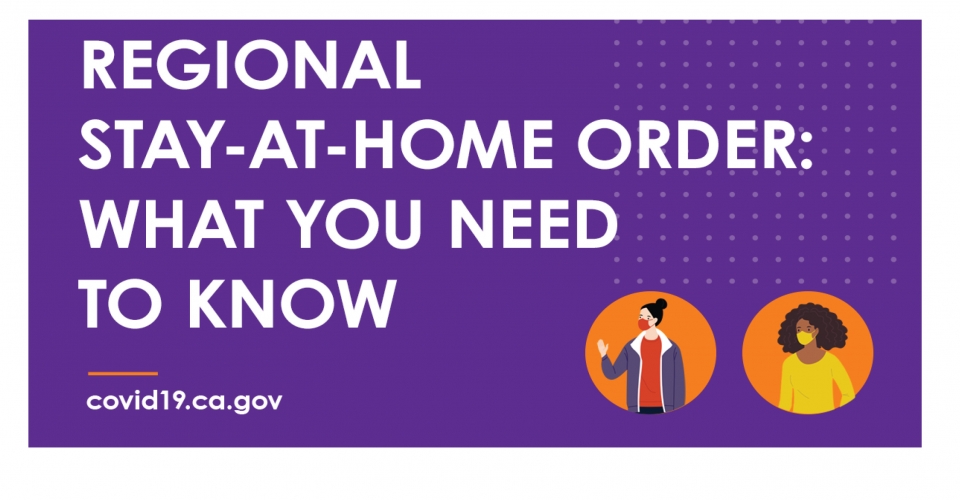
Regional Stay-At-Home Order from California Department of Public Health
ICU capacity for the Southern California Region, which includes Irvine and Orange County, hit 12.5% Saturday, triggering the State's new Regional Stay-at-Home order. The order went into effect on December 6 at 11:59 p.m.
The order will remain in effect for at least 3 weeks and, after that period, will be lifted when a region’s projected ICU capacity meets or exceeds 15%. This will be assessed on a weekly basis after the initial 3 week period.
What does this mean?
All Californians need to 1) stop gathering with those outside of your household, 2) keep activities outdoors, and 3) keep your mask on when outside of the home when six feet of social distancing cannot be maintained. In addition, all nonessential travel is temporarily restricted.
Sectors to temporarily close:
- Indoor recreational facilities
- Hair salons and barbershops
- Personal care services
- Museums, zoos, and aquariums
- Movie theaters
- Wineries
- Bars, breweries, and distilleries
- Family entertainment centers
- Cardrooms and satellite wagering
- Limited services
- Live audience sports
- Amusement parks
The following sectors will have additional modifications in addition to 100% masking and physical distancing:
- Outdoor recreational facilities: Allow outdoor operation only without any food, drink or alcohol sales. Additionally, overnight stays at campgrounds will not be permitted.
- Retail: Allow indoor operation at 20% capacity with entrance metering and no eating or drinking in the stores. Additionally, special hours should be instituted for seniors and others with chronic conditions or compromised immune systems.
- Shopping centers: Allow indoor operation at 20% capacity with entrance metering and no eating or drinking in the stores. Additionally, special hours should be instituted for seniors and others with chronic conditions or compromised immune systems.
- Hotels and lodging: Allow to open for critical infrastructure support only.
- Restaurants: Allow only for take-out, pick-up, or delivery.
- Offices: Allow remote only except for critical infrastructure sectors where remote working is not possible.
- Places of worship and political expression: Allow outdoor services only.
- Entertainment production including professional sports: Allow operation without live audiences. Additionally, testing protocol and “bubbles” are highly encouraged.
The following sectors are allowed to remain open when a remote option is not possible with appropriate infectious disease preventative measures including 100% masking and physical distancing:
- Critical infrastructure
- Schools
- Non-urgent medical and dental care
- Child care and pre-K
